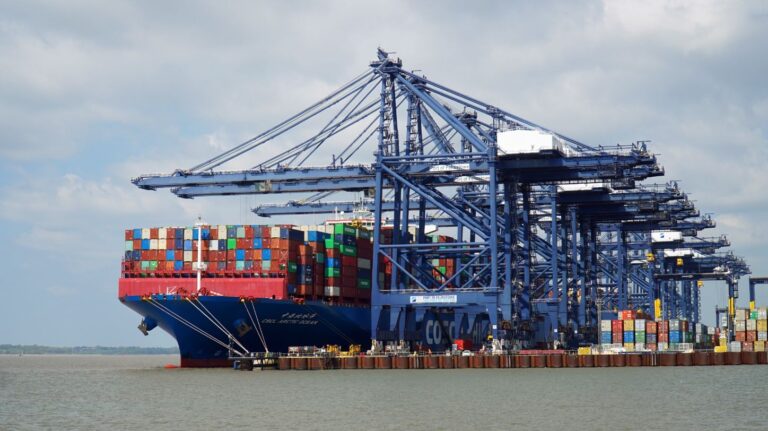
UK major ports experienced a 1% year-on-year decline in total freight tonnage for Q2 2024, handling 108 million tonnes, according to the ‘Port Freight Quarterly Statistics: April to June 2024‘ report from the UK Department for Transport.
Inward traffic decreased by 1% to 72.4 million tonnes, while outward traffic fell by 2% to 35.6 million tonnes. Despite these declines, unitised traffic remained stable at 5.4 million units.
Liquid bulk and container tonnage saw notable reductions, while roll-on/roll-off (Ro-Ro) freight increased by 4%, highlighting mixed trends in post-Brexit UK trade patterns.
The report shows a more pronounced 5% decrease in total tonnage over the rolling year to June 2024, falling to 418.1 million tonnes.
Liquid bulk tonnage dropped significantly by 5%, driven primarily by a sharp 79% decline in LNG traffic at Medway port. Meanwhile, dry bulk tonnage also decreased by 3%, with Port Talbot, a key hub for dry bulk materials, seeing a reduction of 36% as Tata Steel reduced operations.
The report indicates that container traffic saw a 7% decrease in tonnage in Q2 2024, with London port experiencing the largest reduction, dropping by 14% to 3.6 million tonnes.
However, measured in units, container traffic grew by 8%, likely driven by an increase in empty containers or lighter cargo loads per container.
Ro-Ro freight, on the other hand, performed well, increasing by 4% to 24.3 million tonnes in Q2 2024. This growth was driven by London ports, where Ro-Ro tonnage increased by 39%, and Dover, which saw a 6% increase in Ro-Ro units.
While the UK’s port freight traffic shows resilience in some sectors, the overall decline underscores the ongoing adjustments in trade flows following the UK’s exit from the European Union.
Full details and statistics are available in the official report, which is expected to be finalised in July 2025.






